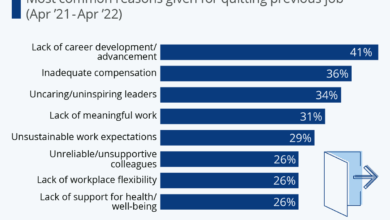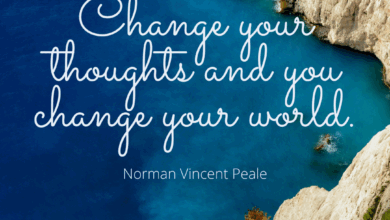Understand the science behind restful nights

Ever feel like your sleep schedule is fighting against you? Like you’re trying to force yourself into a routine that just…doesn’t fit? You’re not alone. Millions struggle with sleep, and often, the key isn’t trying harder, but understanding how your body naturally works. It all comes down to a fascinating internal clock called your circadian rhythm. This isn’t just about when you feel sleepy; it impacts everything from your mood and digestion to hormone release and body temperature. For years, I personally battled inconsistent sleep, feeling constantly tired and unproductive. It wasn’t until I learned about my circadian rhythm and how to work with it, instead of against it, that things truly started to improve. This article will break down the science behind restful nights, offering practical tips to help you sync up with your natural sleep-wake cycle and finally get the restorative sleep you deserve. We’ll explore what influences your internal clock, how to identify your chronotype, and simple changes you can make to optimize your sleep for better health and well-being. We’ll also touch on things like blue light exposure, melatonin production, and the impact of shift work on your sleep patterns.
Key Takeaways
- Your circadian rhythm is a 24-hour internal clock that regulates sleep-wake cycles and many other bodily functions.
- External cues like sunlight and meal times help synchronize your circadian rhythm.
- Identifying your “chronotype” (morning lark, night owl, etc.) can help you tailor your schedule for optimal sleep.
- Disruptions to your circadian rhythm can lead to sleep disorders, mood changes, and health problems.
- Simple lifestyle adjustments, like consistent sleep schedules and limiting screen time before bed, can significantly improve sleep quality.
- Melatonin, a hormone regulated by your circadian rhythm, plays a crucial role in promoting sleepiness.
- Understanding the impact of light exposure on your circadian rhythm is key to regulating your sleep.
What Exactly Is Your Circadian Rhythm?
Think of your circadian rhythm as your body’s master clock. It’s a natural, internal process that regulates the sleep-wake cycle and repeats roughly every 24 hours. But it’s not just about sleep! This rhythm influences hormone release (like cortisol and melatonin), body temperature, and even digestion. It’s a complex system, but the core idea is that your body anticipates changes in the environment – primarily light and darkness – and prepares accordingly. This anticipation is why you naturally feel sleepy at night and alert during the day. The suprachiasmatic nucleus (SCN), a tiny region in the brain, is the main control center for your circadian rhythm. It receives information about light exposure from your eyes and uses that information to synchronize your internal clock.
The Role of Light and Darkness
Light is the most powerful regulator of your circadian rhythm. When light enters your eyes, it sends a signal to the SCN, suppressing melatonin production (the sleep hormone) and promoting wakefulness. This is why exposure to bright light, especially sunlight, in the morning can help you feel more alert and energized. Conversely, darkness signals the SCN to increase melatonin production, preparing your body for sleep. This is why creating a dark, quiet sleep environment is so important. Even small amounts of light, like from a phone screen or streetlamp, can disrupt melatonin production and interfere with sleep. Consider investing in blackout curtains or using a sleep mask to minimize light exposure.
Meet Your Chronotype: Are You a Lark or an Owl?
Not everyone’s circadian rhythm is exactly the same. People naturally tend to fall into different “chronotypes,” which describe their preferred sleep-wake times. The most common chronotypes are:
- Larks (Morning Types): These people wake up early and feel most alert in the morning. They tend to go to bed early as well.
- Owls (Night Types): Owls prefer to stay up late and wake up later. They often feel most productive in the evening.
- Intermediate Types: Most people fall somewhere in between these two extremes.
Understanding your chronotype can help you tailor your schedule to work with your natural inclinations. Trying to force yourself to wake up early if you’re a natural owl is a recipe for chronic sleep deprivation. There are online quizzes available to help you determine your chronotype, but often, simply paying attention to when you naturally feel most alert and tired can provide valuable insights.
How Disruptions to Your Circadian Rhythm Happen
Life happens, and sometimes, our circadian rhythm gets thrown off track. Common culprits include:
- Jet Lag: Traveling across time zones disrupts your internal clock, leading to fatigue and sleep disturbances.
- Shift Work: Working irregular hours can make it difficult to maintain a consistent sleep schedule.
- Social Jet Lag: This occurs when your weekend sleep schedule differs significantly from your weekday schedule.
- Excessive Screen Time: The blue light emitted from electronic devices can suppress melatonin production.
- Irregular Sleep Schedules: Going to bed and waking up at different times each day confuses your internal clock.
Chronic disruptions to your circadian rhythm can have serious health consequences, including increased risk of obesity, diabetes, cardiovascular disease, and mood disorders.
The Power of Consistency: Building a Regular Sleep Schedule
One of the most effective ways to regulate your circadian rhythm is to establish a consistent sleep schedule. This means going to bed and waking up around the same time every day, even on weekends. I know, it’s tempting to sleep in on Saturday and Sunday, but even a small shift in your sleep schedule can disrupt your internal clock. Aim for 7-9 hours of sleep per night, and create a relaxing bedtime routine to signal to your body that it’s time to wind down. This could include taking a warm bath, reading a book, or listening to calming music.
Melatonin and Your Sleep-Wake Cycle
Melatonin is a hormone that plays a crucial role in regulating sleep. As mentioned earlier, your circadian rhythm controls the production and release of melatonin. Melatonin levels typically start to rise in the evening, promoting sleepiness, and peak during the night. Exposure to light, especially blue light, can suppress melatonin production. While melatonin supplements are available, they’re not a magic bullet. It’s generally best to focus on optimizing your natural melatonin production through consistent sleep schedules and light management.
Diet and Exercise: Supporting Your Circadian Rhythm
What you eat and how much you exercise can also impact your circadian rhythm. Eating meals at regular times can help synchronize your internal clock. Avoid heavy meals close to bedtime, as they can interfere with sleep. Regular exercise is beneficial for sleep, but avoid intense workouts close to bedtime. Aim to finish exercising at least a few hours before you go to bed. Staying hydrated throughout the day is also important for overall health and sleep quality.
Blue Light: Friend or Foe?
Blue light, emitted from smartphones, tablets, and computers, is a major disruptor of the circadian rhythm. It suppresses melatonin production and makes it harder to fall asleep. To minimize the impact of blue light, consider using blue light filters on your devices, wearing blue light-blocking glasses, or simply avoiding screens for at least an hour before bed. Many phones now have built-in “night mode” features that reduce blue light emission.
The Impact of Shift Work on Sleep
Shift work presents a significant challenge to maintaining a healthy circadian rhythm. Working irregular hours disrupts your natural sleep-wake cycle, leading to chronic sleep deprivation and increased risk of health problems. If you work shifts, it’s important to prioritize sleep whenever possible. Create a dark, quiet sleep environment, and use blackout curtains and earplugs to minimize distractions. Consider using melatonin supplements (under the guidance of a healthcare professional) to help regulate your sleep.
Creating a Sleep-Conducive Environment
Your bedroom should be a sanctuary for sleep. Make sure it’s dark, quiet, and cool. Invest in a comfortable mattress and pillows. Use blackout curtains or a sleep mask to block out light. Use earplugs or a white noise machine to block out noise. Keep the temperature cool – around 65 degrees Fahrenheit is ideal. And avoid using your bedroom for activities other than sleep and intimacy.
Resetting Your Circadian Rhythm: When to Seek Help
If you’ve tried making lifestyle adjustments and are still struggling with sleep, it may be time to seek professional help. A doctor can rule out any underlying medical conditions that may be contributing to your sleep problems. They may also recommend cognitive behavioral therapy for insomnia (CBT-I), a highly effective treatment for chronic insomnia. CBT-I helps you identify and change the thoughts and behaviors that are interfering with your sleep.
Long-Term Benefits of a Healthy Circadian Rhythm
Prioritizing your circadian rhythm isn’t just about getting a good night’s sleep. It’s about investing in your overall health and well-being. A healthy circadian rhythm can improve your mood, boost your immune system, enhance your cognitive function, and reduce your risk of chronic diseases. It’s a small change that can have a big impact on your life.
FAQs
Q: Can I really “reset” my circadian rhythm?
A: Yes, you can! It takes time and consistency, but by following the tips outlined in this article – maintaining a regular sleep schedule, maximizing light exposure during the day, and minimizing light exposure at night – you can gradually reset your circadian rhythm.
Q: What if I have to travel frequently for work?
A: Jet lag is unavoidable when traveling across time zones, but you can minimize its impact. Gradually adjust your sleep schedule in the days leading up to your trip, and expose yourself to bright light at appropriate times in your new location. Melatonin supplements can also be helpful.
Q: Is it okay to nap if I’m sleep-deprived?
A: Short naps (20-30 minutes) can be beneficial, but avoid long naps, especially in the late afternoon, as they can disrupt your nighttime sleep. Focus on improving your overall sleep hygiene rather than relying on naps to compensate for sleep deprivation.
Q: How does aging affect the circadian rhythm?
A: As we age, our circadian rhythm tends to become weaker and less flexible. This can lead to changes in sleep patterns, such as earlier bedtimes and wake-up times. Maintaining a consistent sleep schedule and maximizing light exposure are even more important as we age.
Q: What’s the difference between sleepiness and fatigue?
A: Sleepiness is the desire to sleep, while fatigue is a feeling of exhaustion and reduced energy. Disruptions to your circadian rhythm can contribute to both sleepiness and fatigue.
I hope this information empowers you to take control of your sleep and unlock the many benefits of a healthy circadian rhythm. Don’t hesitate to experiment with different strategies to find what works best for you. Sweet dreams! Please share this article with anyone you think might benefit from it, and let me know in the comments what strategies you’ve found helpful for improving your sleep.
Hi, I’m Sophia! Welcome to my blog Try Stress Management (trystressmanagement.com), where I share simple, down-to-earth ways to handle stress and bring more calm into everyday life. Think of me as your friendly guide, offering practical tips, reflections, and little reminders that we’re all figuring this out together.
When I’m not blogging, you’ll usually find me with a good book, sipping tea, or exploring new walking trails. I believe small changes can make a big difference—and that a calmer, happier life is possible for everyone.




